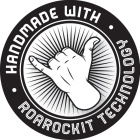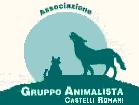Cedric testing the new Peter Lynn inflatable kite in a prototype version
Again, ruotenelvento leaves the comfortable fields of landsailing for a a raid in the kiteboarding world. A interview with Cedric Vandenschrik, Peter Lynn tester for the new inflatable kites of the best appreciated foil kite brand.
ruotenelvento – Who’s Cedric? Where do you live, when and how did you start kitesurfing?
Ced – I was born in Somalia of an Italian mother and a Belgian father, I live on the east coast of South Africa but travel extensively about half of the year. I started kiting in 1999, and got in the water at the end of 2000. I have been a team rider with peter lynn since 2009. I make a living making music and entertaining people.
rnv – What are your favourite spots?
Ced – I love Cannon Rocks, my home spot, which really offers everything a kiter could want. I also like Cape Town because it really tests your strong wind abilities. I have been in fuerte ventura and enjoyed Flag Beach and Cotillo, also visited Mauritius and enjoyed the remoteness of the north of the island. Sardegna was also a lot of fun this summer.
rnv – Unfortunately I’m not a great powerkite user. I open my foil when there’s no wind enough for landsailing just to “feel the power”. But I must confess I’ve been always attracted by PL products. Maybe because this brand is so beloved by the kiting community, maybe for its his history, maybe for “uncle” Peter endless research. Why in your opinion PL is so different from the other brands?
Ced – Because Peter is so different and passionate about what he does! Even though he is not involved in the design of power kites and kitesurfing kites anymore, his energy and legacy lives on.
rnv – Kiting world has been thrown into turmoil by the news regarding the new LEI (leading edge inflatable). Which are the main features of this kite?
Ced – The production of LEI kites is a purely market related move. A large portion of the market wants to use this type of product and therefore it makes sense for Peter Lynn to produce such a product. It’s also a lot easier to sell something that is marketed by many other companies out there instead of marketing a different concept and product.
rnv – Which size and when will it be available?
Ced – I’m not sure of the exact sizes, but I can tell you that there will be more than one model available. The rest of the info, you will have to wait for the official release. The release date will hopefully get confirmed in the next month.
rnv – I’m sometimes pretty annoyed by a sort of ideological struggle between the foil party against the inflatable party. In the end, if all you want is having fun, who cares? In Italy the level of this struggle is pretty high. Is it the same all over the world?
Ced – The sport of kiteboarding does suffer from a great deal of brand affiliation “to the death” which is all part of the consumerist marketing ideal. I have come across this all over the world indeed. But I have also come across open minded people. With the growth of the sport, perhaps things will change, perhaps not…
rnv – When the final user unwind the lines from her or his brand new toy maybe she or he is not aware of all the job is behind a powerkite. How long does the development of o kite take? Which are the main steps of this process?
Ced – Nowadays the development of a kite generally starts from an existing platform. People like Peter Lynn did the ground work many years ago and you now have a great amount of collective experience around the world. This makes it easy, but also harder to come out with a product that is better than the competition. Also the conditions one encounters in this sport is forever changing, and a kite that may work in 40 knots, may be useless in 15 knots, then taking into account all the variables that one comes across. Also being a potentially dangerous sport makes testing and development difficult. Imagine testing the safety release of a kite in 40 knots of wind to see if it works when a failure could mean serious injury… This makes development a timely affair. Testing the kites in all kinds of conditions by all kinds of kiters (different weights), testing materials, etc… It is a long process. And of course you need wind!
Cedric testing the new Peter Lynn inflatable kite in a prototype version
rnv – When you find a kite needs a major change or adjustment, can you do it on the field? There’s someone with a sewing machine who follows you? In which areas a kite usually can need major changes? Profiles? bridles? bars? safety system?
Ced – All the variables mentioned in the question get attention at the designing stage of course. So that there is only small adjustments made on the beach. With the foil kites, certain changes were easier to try with the use of adhesive tape to make changes to the profile. Sometimes this happens on the beach. Of course with the LEI it’s impossible and would need a new kite. Many bridle attachment points get sewn in on the LEI prototypes so that many different option can be tried. This all happens on the beach so that various settings can be tried in the same wind conditions. The rule is to only change one thing at a time! Otherwise confusion creeps in. The bar and safety system generally get worked on last to suit whatever direction the kite design has taken. The safety system is always the hardest to test because people’s reactions are always difficult to predict, and testing them across a wide variety of conditions is sometimes dangerous and difficult.
rnv – In landsailing we see a quite strong “localization”. US yachts are different from the ones that are built in NZ and AUS, these are different from the Europeans and so on. What happens with a kite? Do you develop a universal wing or some models are designed for a well defined market and sea/wind conditions?
Ced – That is why Peter Lynn will be coming out with different models. To try and cover the majority of the demand out there. The different models will cover different riding styles. Of course all conditions are not always coverable, and it also becomes a huge marketing investment in which the return is not always guaranteed. As for the conditions, I think that within the technology (LEI versus Foil) each has their limitations and advantages.
rnv – I’ve read something about your great interest in music on http://peterlynn.com/teams/international/cedric-vandenschrik/. Do you believe there’s a deep connection between sensitivity in music and sensitivity in flying a kite to make it better? Do you sing or emulate music instruments with your mouth – I do! – while sailing?
Ced – Music is my life, and it has been for a long time. I always have music in my head, and I find the freedom that kiting gives me permeates into the music. As for emulating instruments… well I do that and a bit more 😉
rnv – I appreciate so much in the last two years PL has pushed a lot in the right direction to promote PLs in Italy. Have you aver met your PL mates here, Pitu, Karin and Pier Francesco?
Ced – I was somewhat involved in the Peter Lynn revival in Italy and also instrumental in getting Pitu involved. I hope the brand will grow into a strong presence on the italian scene.
rnv – Are you focusing only on tests or you also take part to races?
Ced – Testing kites is a new thing. Racing and competitions have never really been my driving energy. My pleasure comes from free riding, riding waves at my home spot on my own with dolphins as company… Competitions are a great way to meet like minded people and i have had fun at a few (generally playing music at those events too).
rnv – Generally kiters shift from a surface to another in a very natural way. Do you like landkiting?
Ced – I like any form of kiting, even the single line kites which are actually an amazing art form. I’ve tried most other kinds of kiting activities, Snow kiting, land boarding, buggying etc… Just that the land is a lot harder than the water 🙂



















Lascia un commento